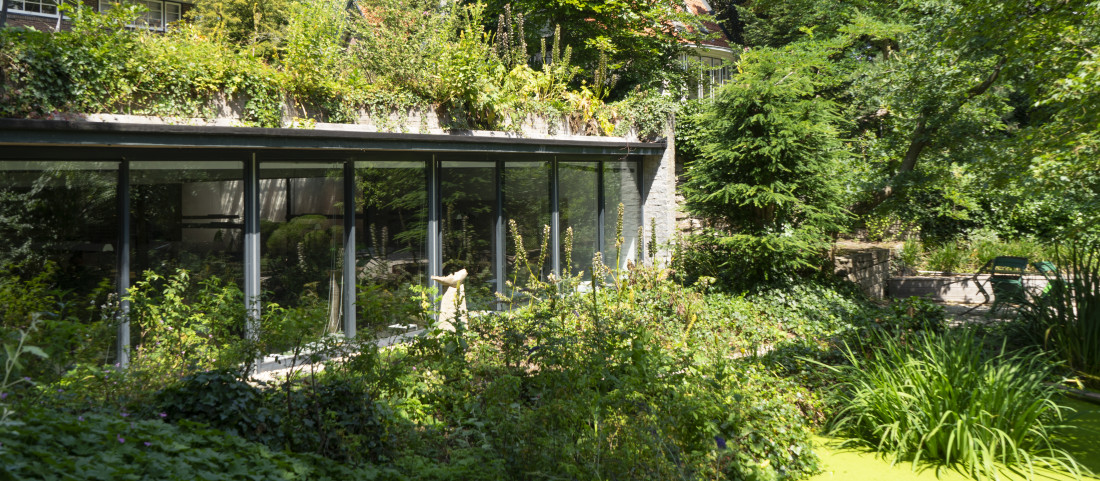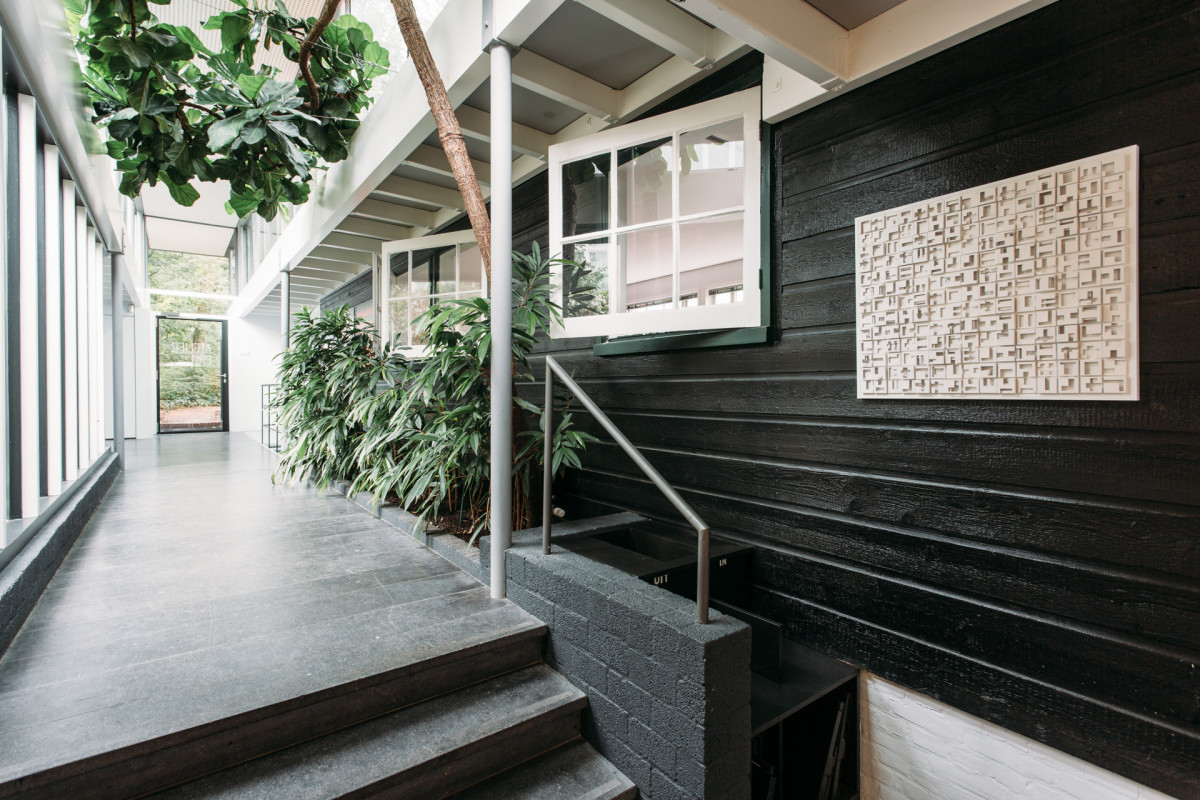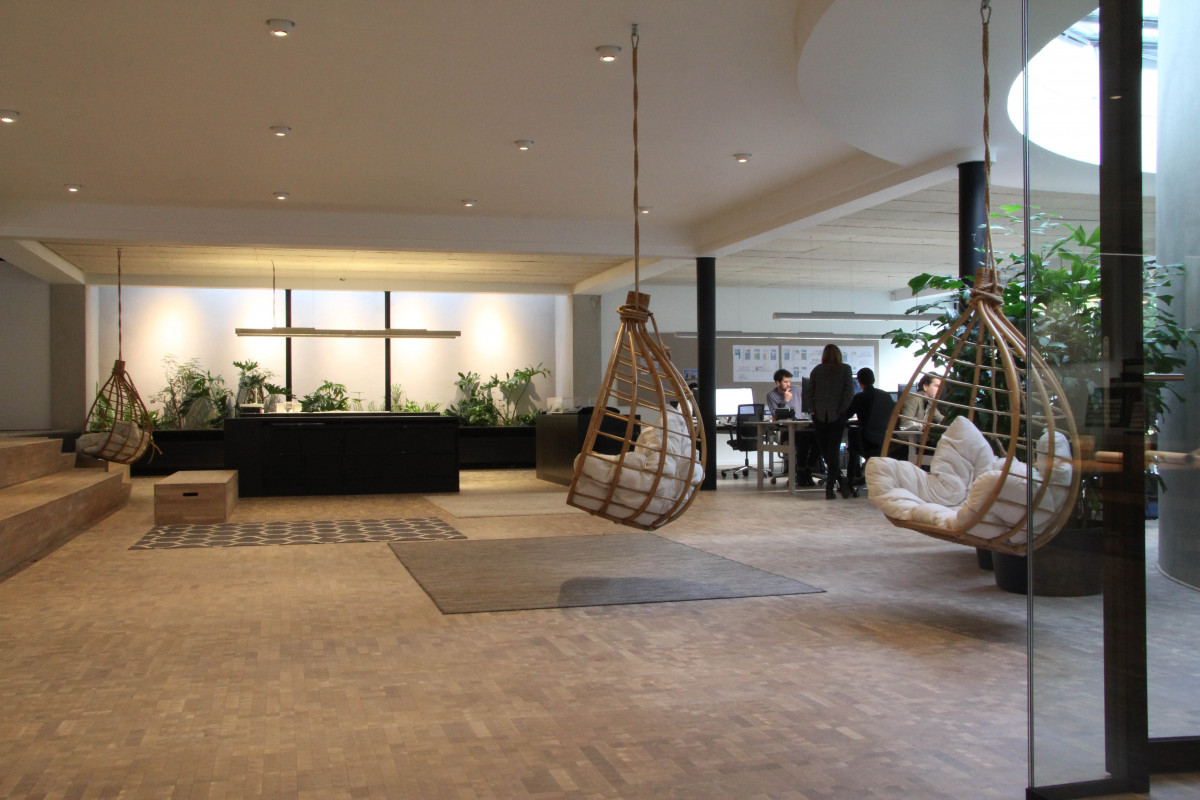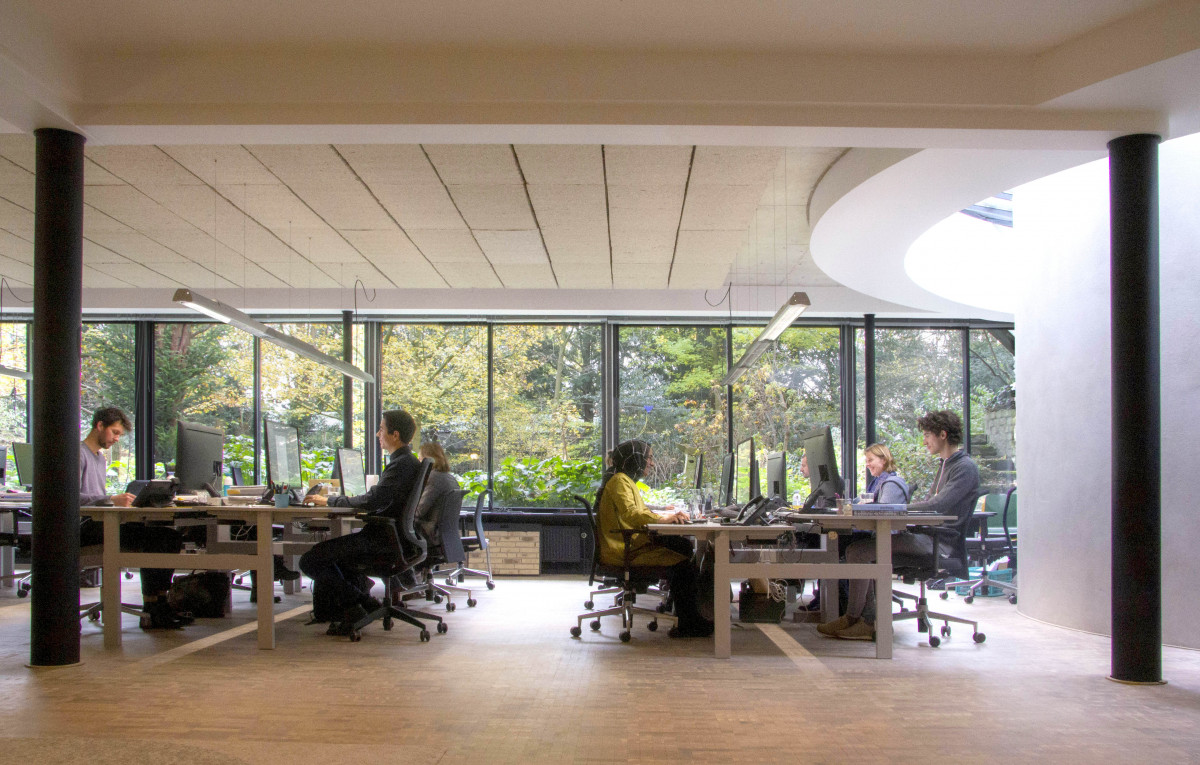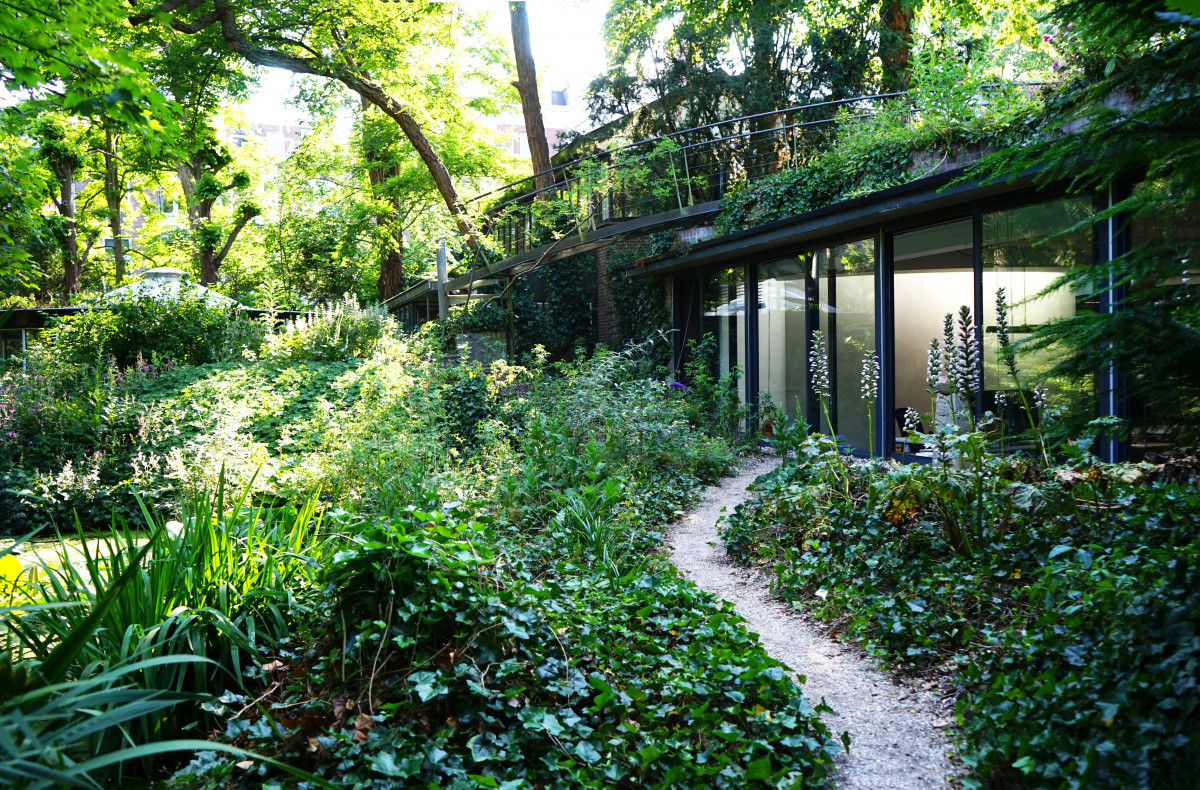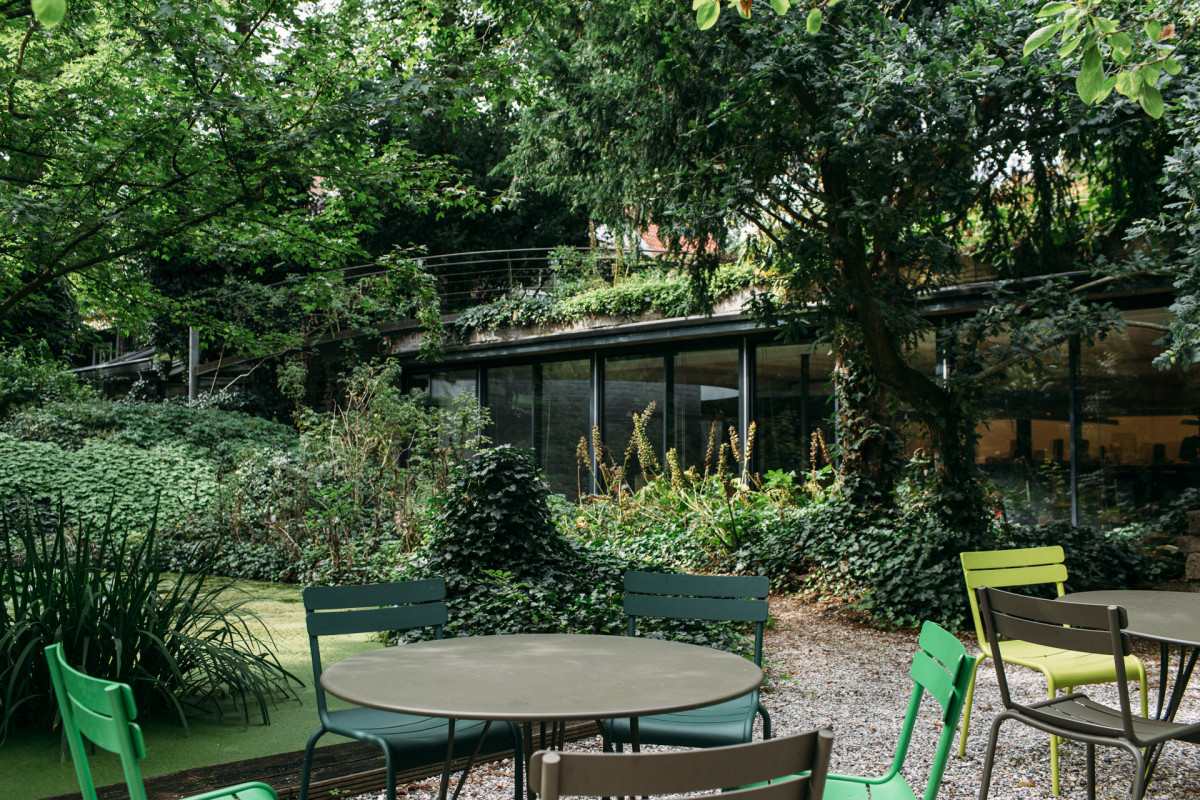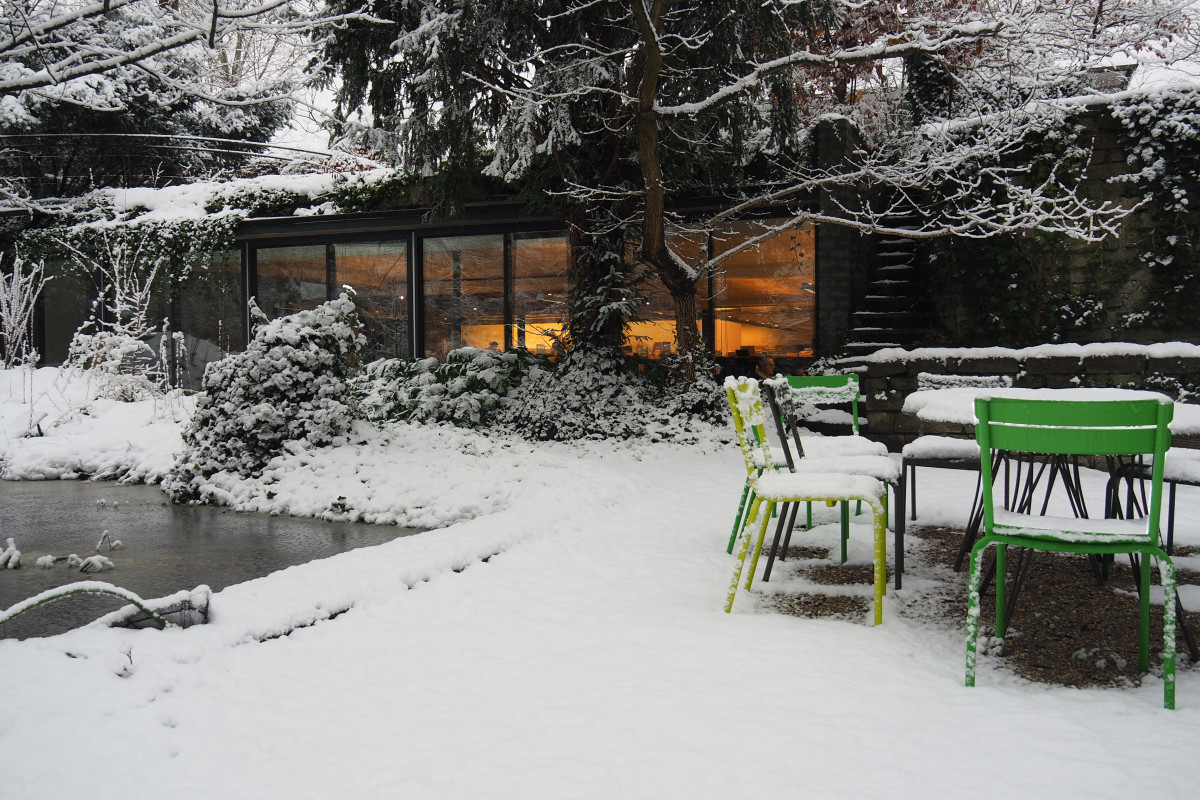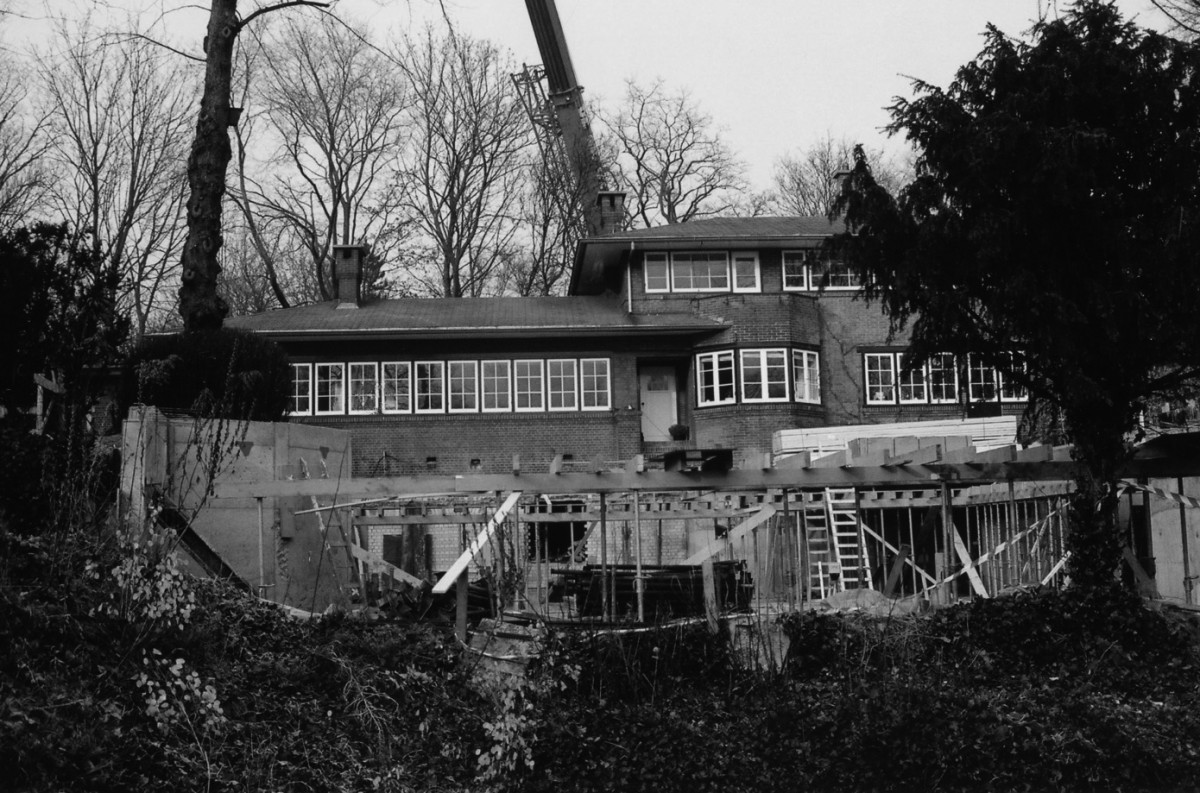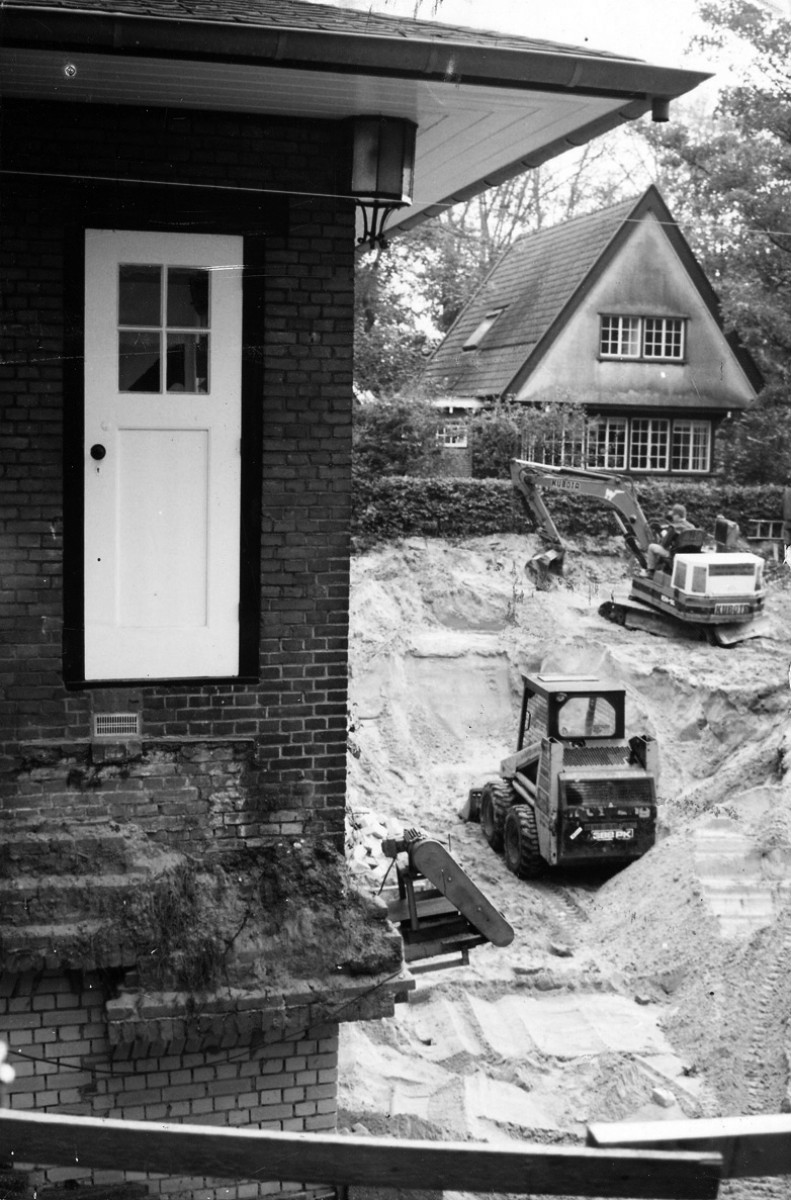Atelier PRO's domicile sits on an inland dune, at the border between the city of The Hague and the parklands separating it from coastal Scheveningen. Right up against the office, at the highest point of the city, is the general cemetery whose main building was once William I's base when hunting. The complex of volumes on Kerkhoflaan where atelier PRO have been established since 1978, has grown organically over the course of a century in the garden of 'Beaulieu', a former roadside tavern at the head end of Bankastraat.
In about 1900 the artist A.M. Luijt (1879-1951) had a painting studio built in this garden. In 1918 a small house doubling as a piano studio was erected in the same garden where Madame Luijt gave piano lessons. The architect who created this edifice was Dirk Roosenburg (1887-1962). Its design was inspired by the houses of Frank Lloyd Wright. At that time, Wright's work was very much the focus of attention in the Netherlands thanks to Roosenburg's friend and former employer Berlage, who had 'discovered' Wright during his travels in America. Into the house's monumental mantelpiece Roosenburg worked glazed bricks rejected by Berlage when realizing his design for the St Hubertus hunting lodge at Hoge Veluwe.
When Luijt emigrated to South Africa Roosenburg took over the house, expanding it and moving into it himself in 1923. To the painter's studio he added a black timber shed to accommodate his own office. From then on, the office swelled steadily and so did the Roosenburg family. With six children, a governess and a kitchen maid the family soon outgrew the house. So in 1931 Roosenburg bought a Scandinavian timber frame kit which was assembled in the garden and registered with the authorities as a small guest house. In 1937 Roosenburg expanded his home with a new bathroom and built onto the studio an annexe that in certain details bears a remarkable resemblance to the design for a KLM airlines office then lying on his drawing table.
During the war the office just about managed to keep going. After the liberation however there was such a deluge of work that what was by now Architectenbureau Roosenburg-Verhave-Luijt was compelled to open a branch in adjoining Bankastraat. It was at this time that Rem Koolhaas, Roosenburg's grandson repatriated from Indonesia, briefly lodged together with his mother in the house on Kerkhoflaan.
When Roosenburg left the practice in the late fifties the Kerkhoflaan complex remained in the possession of his family. After having been rented out for a while it was offered for sale in 1978. Atelier PRO bought the office portion, Hans van Beek the dwelling-house, and erstwhile colleague Henk van de Leeden the 'guest house'.
History has repeated itself. In the course of 25 years atelier PRO grew from a staff of seven to seventy strong and had to keep adding to the building. In 1978 a sheltered walk and a reception area were built between the office and the existing garden gateway on Kerkhoflaan. These were followed by a sun room in 1983 and, in 1986, an extension to the administration department and a cellar below the painter's studio for storing architectural models. In 1988 this series of extensions was terminated by a small round building carefully sited between the monumental trees.
After that it was back to digging out the dune. In 1989 an underground archive was dug beneath the wooden shed and in 1990 a second meeting room below the existing one. Yet all these extensions notwithstanding, the practice was still forced to find extra temporary accommodation, first on Statenlaan, then in Riouwstraat and finally Bankastraat.
On winning the competition for the Haagse Hogeschool in 1990 it seemed inevitable at first that atelier PRO would have to trade in their premises on Kerkhoflaan for something a good deal larger elsewhere in the city. Again a way out was found by digging into the dune, a strategy facilitated by exploiting the difference in level Roosenburg had engineered between the upper and lower garden. Roosenburg had demolished the concrete tennis court laid out in the 19th century behind what was then a wayside tavern on a levelled area of dune, and used the concrete blocks liberated by this exercise to erect a retaining wall between an elevated ornamental garden and a lower-lying vegetable garden. When the so-called Forum was dug out under the upper garden in 1992 this retaining wall could be locally replaced by glazing to open up the new heart of the office to outgoing views and incoming light. After this, the biggest alteration of all, there was once again a distinction made between upper and lower gardens, this time in terms of character: stylized above, rugged and dune-like below.

